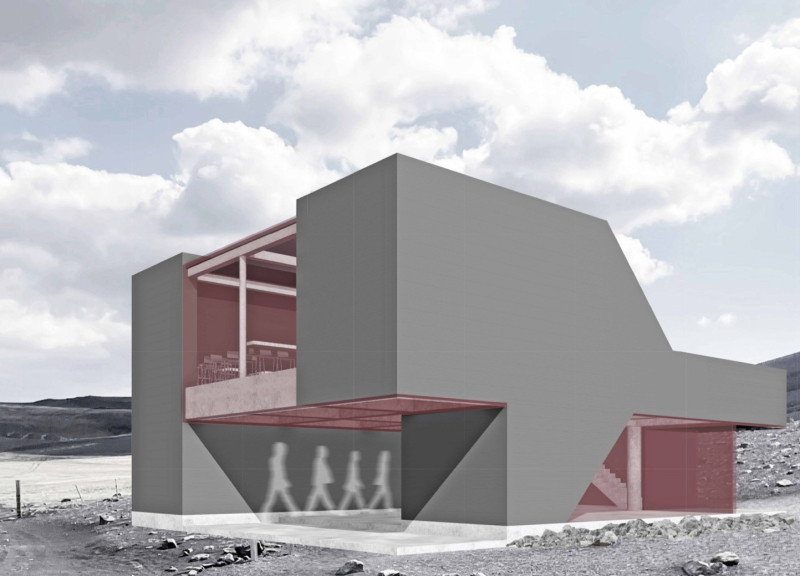5 key facts about this project
Fire and Stone is a visitor centre and coffee shop located at the foot of Hverfjall, a notable volcano in Iceland. The design aims to improve the visitor experience by combining educational features with comfortable spaces for relaxation. The overall concept encourages guests to engage with the unique geology of the area while enjoying refreshment and a view.
Architecture Concept
The design focuses on creating a connection between two main components: an exhibition space and a café. The exhibition area informs visitors about the local volcanic features, preparing them for exploration. The café provides a more leisurely atmosphere, allowing guests to unwind while taking in the natural beauty of Hverfjall.
Materials and Construction
The main structure consists of grey 3D printed concrete, utilizing materials excavated from the site itself. This choice reduces waste and ties the building closely to its surroundings. The red-tinted glazing adds vibrancy and allows sunlight to enter the space. An overhanging entrance leads into the interior and is supported by prefabricated concrete elements, making construction efficient in the remote location.
Spatial Dynamics
As visitors enter, they ascend towards the café, which offers a warm and welcoming environment. The layout includes areas for seating and social interaction, with a roof terrace that extends the café experience outdoors. This terrace provides guests with open views of the volcano, emphasizing the relationship between the architecture and the landscape.
Sustainability Features
Sustainability is a core principle in the design, highlighted by the inclusion of a hot tub that operates on a rainwater collection system. This feature not only enhances the enjoyment of visitors but also reflects an awareness of environmental considerations, aligning with the geothermal qualities of the region.
An inviting atmosphere is created by the interplay of natural light and warm red tones from the glazing. The layout encourages exploration while providing peaceful spaces for reflection, all set against the backdrop of the striking volcanic landscape.






















































